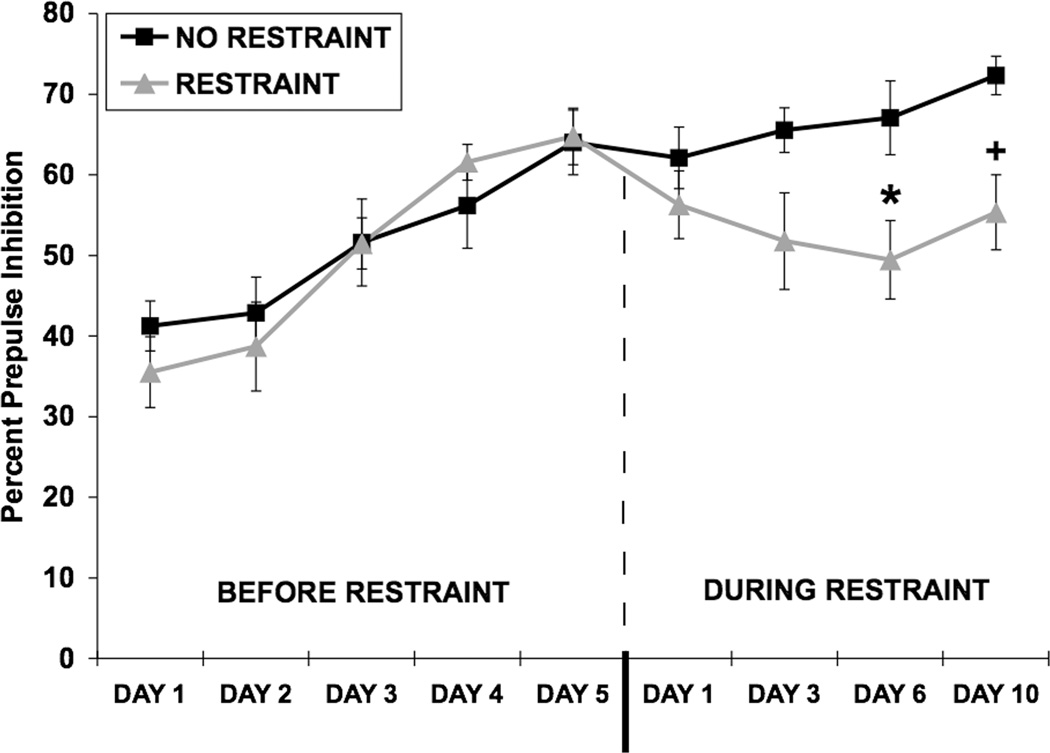Fig. 2.
Effect of restraint stress on PPI following repeated PPI testing. Values shown are means ± SEMs. For all groups, n = 8. The average of all prepulse stimulus intensities (76, 82, 85, and 88 dB) is shown as Percent Prepulse Inhibition. PPI was assessed once a day, for 5 consecutive days, in the absence of restraint (left side of dash). After day 5 of testing, the rats were divided into two counter-balanced groups based on average percent PPI (left side of dash). After a 2-day rest period, one group of rats was exposed to 2-hour restraint/day for 10 consecutive days. Rats in the control group were handled briefly, but not restrained. Rats were tested for PPI 30 minutes after restraint termination on days 1, 3, 6, and 10. Once restraint exposure began, PPI was decreased in restrained rats compared to non-restrained rats on day 6 (*p = 0.02) and on day 10 (+p < 0.01).

